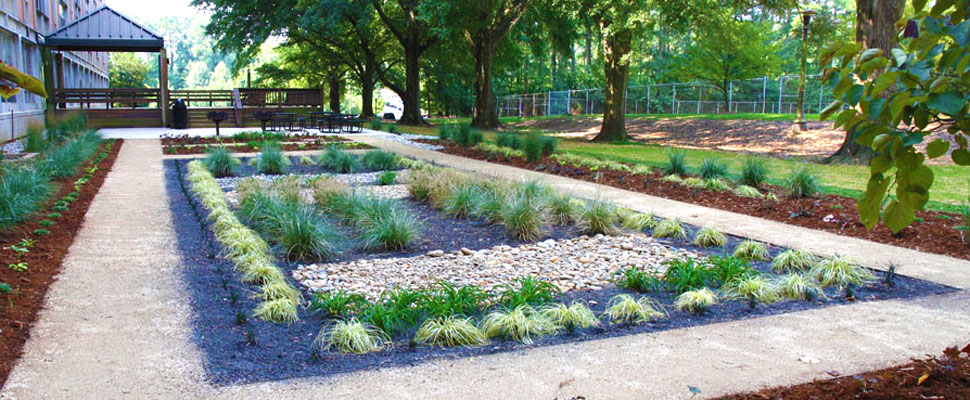
When rain falls on roads, driveways and other impervious surfaces, it creates runoff loaded with fertilizers we put on our grass, yard waste, motor oil from our cars and other pollutants. Plants help slow down and filter stormwater, helping to reduce flooding and keep our waterways cleaner. What can you do to help improve water quality and prevent erosion? Consider whether your yard is a good location for a rain garden.
Location, location, location
Rain gardens are most effective when downstream of a major runoff source, such as a roof or road. Next time it rains, watch the water flow pattern to help determine a good location for your rain garden. Likely, it’s the lowest elevation point in your yard. Just be sure it’s well away from building foundations, septic systems, well heads and utility lines. Partial to full sun is ideal, and be sure to get underground utility lines marked before you settle on a spot.
Too Much Water
In some yards, the water table is too high or the soil is too wet or impermeable, which means a rain garden isn’t possible. Instead, look into the prospect of creating a wetland garden.
Size Your Garden
There’s a handy way to figure out how big your rain garden should be, so be sure to calculate your yard’s needs first. Once you’ve determined your drainage area, use this chart to size your rain garden.
How to Build a Rain Garden
Make sure you’ve had underground utility lines marked first, and then use string or spray paint to outline the area you plan to dig. The rain garden should be four to six inches deep (the center being the deepest). Use some of the extra soil to create a slight berm, which allows some water to be retained during rainfall. Here’s more construction advice
Pick Your Plants
Plants that are native to your area are the best to plant. Experts say not to bother with seed planting; container-grown plants have the greatest likelihood of surviving the transition to your rain garden. Live in NC? The Cooperative Extension has a list of plants that excel in your region of the state. If you’re not much of a garden designer, garden maps can help guide you in creating a beautiful and functional rain garden. You’ll notice that it’s better to plant on the edge of the garden so that roots are higher than the lowest point of the garden, where water will pond. After planting, add mulch in order to prevent erosion and help in further water filtering. Be sure to cover the berm with mulch or grass as well.
Maintaining your Rain Garden
Like any garden, a rain garden requires some maintenance. The Cooperative Extension advises mulching annually and weeding and pruning as necessary.
More resources:
